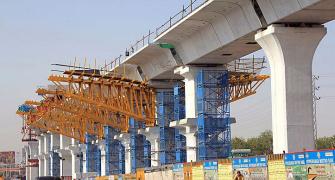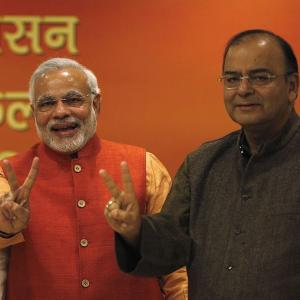 India Ratings & Research says the union budget attempts to revive economic growth under the given macroeconomic constraint.
India Ratings & Research says the union budget attempts to revive economic growth under the given macroeconomic constraint.
The government has given a fillip to household savings by raising the tax exemption limits. It has also announced a slew of measures to push investments.
We believe these efforts should address the supply-side constraints, which have been adversely impacting the economy and keeping the inflation rate high, particularly of food products.
Continuation of excise exemption in certain sectors till end-December 2014 and investment allowance to MSMEs up to FY17 will also support growth.
The budget has shown its commitment for fiscal consolidation and pegged the FY15 fiscal deficit at 4.1% of GDP.
However, the budget arithmetic is slightly optimistic.
The budget has assumed a nominal GDP growth of 13.4% (FY14: 12.3%; FY13: 12.2%) and net tax revenue buoyancy of 1.26, leading to net tax revenue growth of 16.9%.
Disinvestment target in FY15 is INR 634.25bn (FY14: 258.41 bn; FY13:INR 258.90bn). We believe the sanctity of the 4.1% fiscal deficit hinges on the government achieving these targets, which at the moment looks hopeful.
A sectoral analysis is as follows:
Banks: The enabling provision for banks to raise long-term liabilities is welcome, particularly as the exemption of cash reserve ratio (CRR)and statutory liquidity ratio (SLR) is net interest margin accretive.
The provision more than adequately compensates banks for any tenor premium that they may pay on long-term bonds.
Ind-Ra had earlier commented on the critical need for banks to raise long-term senior bonds to better manage their asset-liability mismatches, which have grown to unsustainable levels for some government banks (see Senior Bonds: A Structural Fix for Banks).
Investor appetite is likely to be strong, as these instruments do not carry loss-absorption features.The Finance Minister mentioned a priority sector exemption for these instruments, which may need to be clarified.
Ind-Ra believes that banks should be left to decide on the end-sector use of these funds,as any restriction on deployment may confuse investors about the risk profile of these instruments.
The commitment to bank consolidation and improve autonomy should increase the efficiency and competitiveness of government banks.
The proposal to tap retail markets for Basel III equity suggests the government's reluctance to inject capital beyond its current shareholding.
This may put pressure on the ability of some weak public sector banks to raise growth capital.
Infrastructure: Ind-Ra believes that the budget carries a positive note for their infrastructure sector as a whole.
The proposals to relax CRR/SLR requirements for infrastructure bonds and set up infrastructure investment trusts by banks are intended to deepen debt market and create a risk appetite for infrastructure investments.
The government's emphasis on public–private partnership projects for attracting investments in airports and seaports reinforces its12th Five-Year Plan commitments to the overall sector.
The 8,500km target for award of roads projects for National Highways Authority of India is ambitious, given the achievements during the last two years. However, it accentuates the government's assurance to enhance the pace of attracting investments.
Assuring coal availability for the existing capacities is a positive for thermal power plants.
This is likely to infuse confidence among foreign investors and lenders, including banks.
The budget clearly focuses on the need for renewables and we believe that this is a stepin the right direction.
The budget proposals display a commitment to revitalise the sector as a whole and inject investor confidence into the sector.
Corporates: As articulated in the Corporate Risk Radar FY15, the overallcorporate profitability is unlikely to improve significantly over thenext two to three quarters.
However, uncertainty because of the fluctuating Indian currency, which in our opinion remains the biggest risk, may reduce given the roadmap drawn out for fiscal consolidationin the budget.
We continue to believe that any improvement in private consumption during FY15 will be driven by rural consumption while urban consumption will continue to disappoint.
From a corporate performance perspective, the focus of the budget can be split into two parts i) to spur demand in the short term and b) to articulate a long-term plan to incentivise corporates to invest in India.
The outlays drawn out for infrastructure and incentives provided for real estate (deductions and REITs) address the short-term growth aspects while reducing some of the stress in thesesectors.
The outlays would also provide some uptick in demand for steel and cement. While fundamentally demand needs to pick up to spur the next level of capex, some extension of incentives on capex could propel corporates to start investing by 3QFY15.
The intent to clear some bottlenecks in the manufacturing and infrastructure sectors could provide for a better investment climate in the long term.
Please click here for the Complete Coverage of Budget 2014 -15








